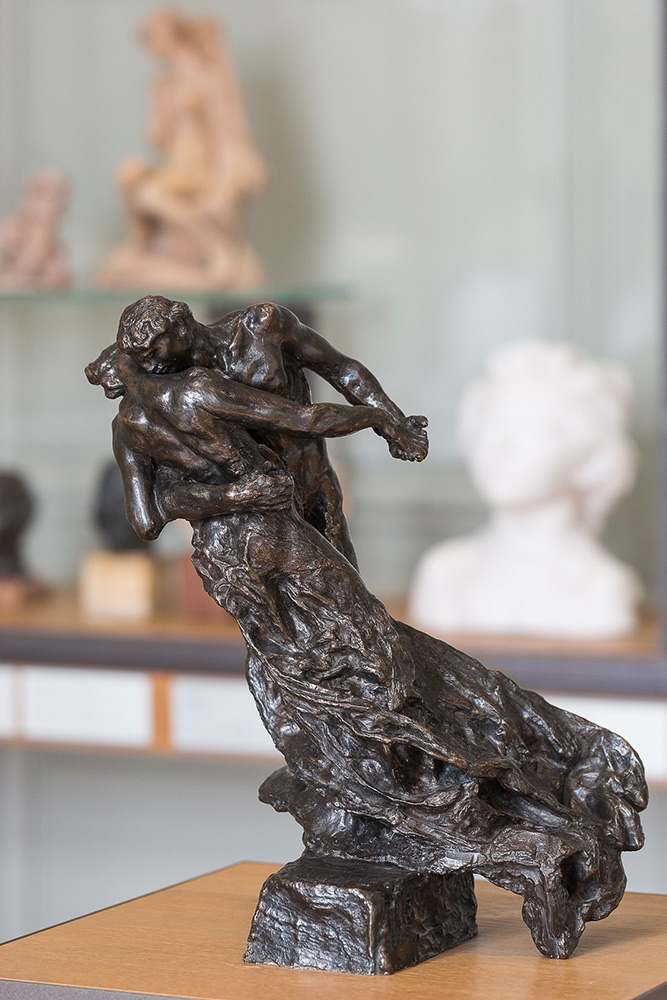Camille Claudel, The Waltz
Camille Claudel (1864-1943) was an assistant in Rodin’s studio while he worked on The Burghers of Calais. Claudel studied sculpture from 1879 to 1883, before becoming Rodin’s student. She also became his mistress; their often-stormy relationship lasted 15 years. Most often remembered for her dramatic life story, Claudel enjoyed independent professional success but suffered a breakdown that sent her to a mental hospital for the last 30 years of her life.

One of Claudel’s most celebrated works is The Waltz, of which she produced several versions in various sizes between 1892 and 1905. The sculpture depicts a dancing couple, both nude, although the woman’s lower body is covered with long, flowing drapery. In Claudel’s original conception, the figures were entirely nude; she was forced to add the drapery after an inspector from the Ministry of Fine Arts declared their sensuality unacceptable, and recommended that her state commission for a marble version of the work be revoked. The subject of the waltz alone was controversial at this time because of the close contact demanded of dancers. Claudel added enough drapery to persuade the inspector to reinstate the commission, but she never finished it. She did, however, modify The Waltz, casting it in bronze as a tabletop sculpture. In this version, the spiral flow of the cloth creates the illusion of rapturous movement as the dancers twirl together, nearly losing their balance.[1]

- Marilyn Stokstad, Art History, vol. 2, 4th ed, (Upper Saddle River, NJ: Prentice Hall: 2011), 1004. ↵

